Approach to Narrow QRS Tachycardia
Raja Selvaraj
Introduction
Narrow QRS tachycardia
- Regular, rate > 100, QRSd < 120
- AT, AVNRT, orthodromic AVRT
- Preexcitation in sinus rhythm / with atrial pacing
- Dual AV nodal physiology
- Manner of induction
Narrow QRS tachycardia, central atrial activation, very short VA
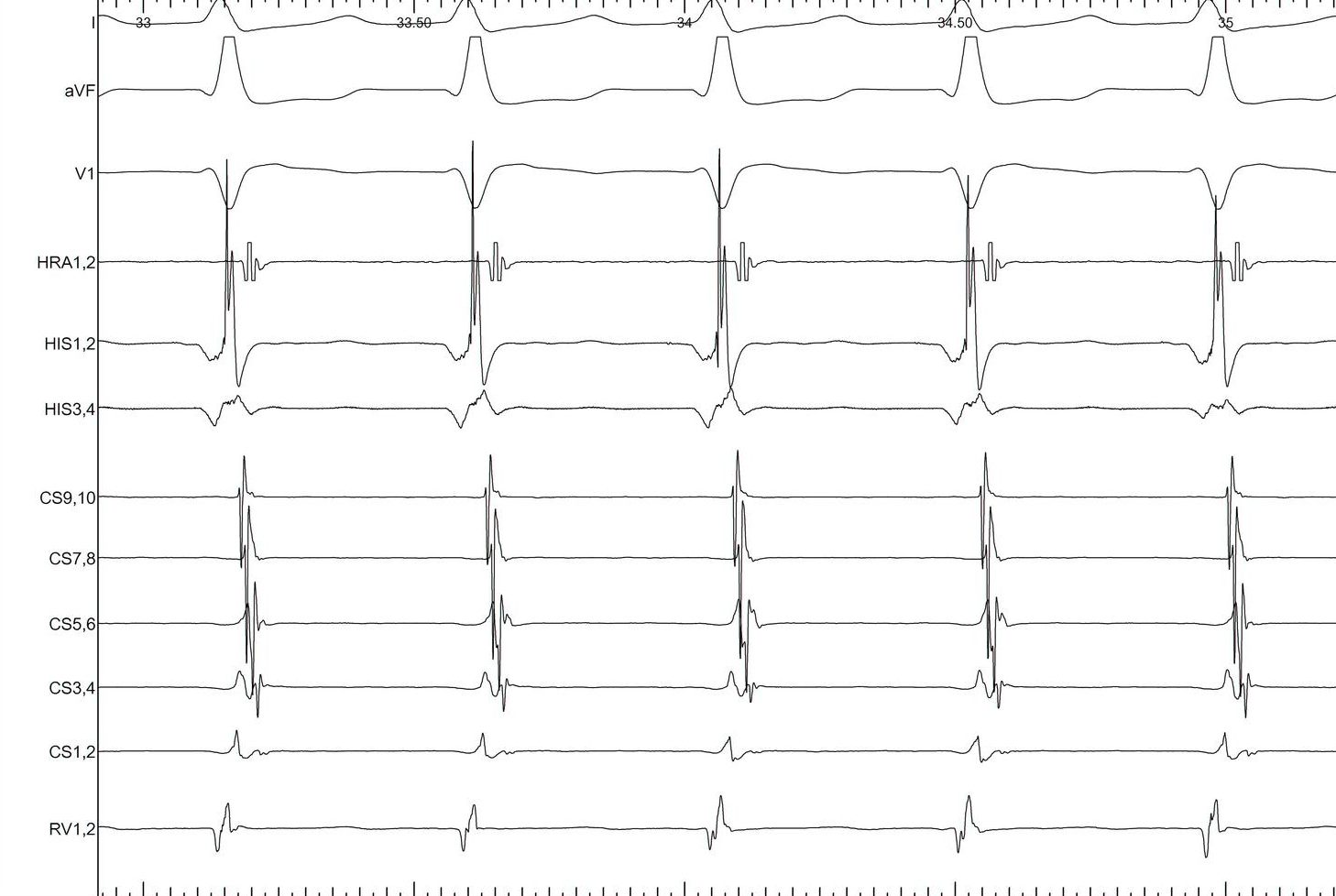
Preexcitation with narrow QRS tachycardia
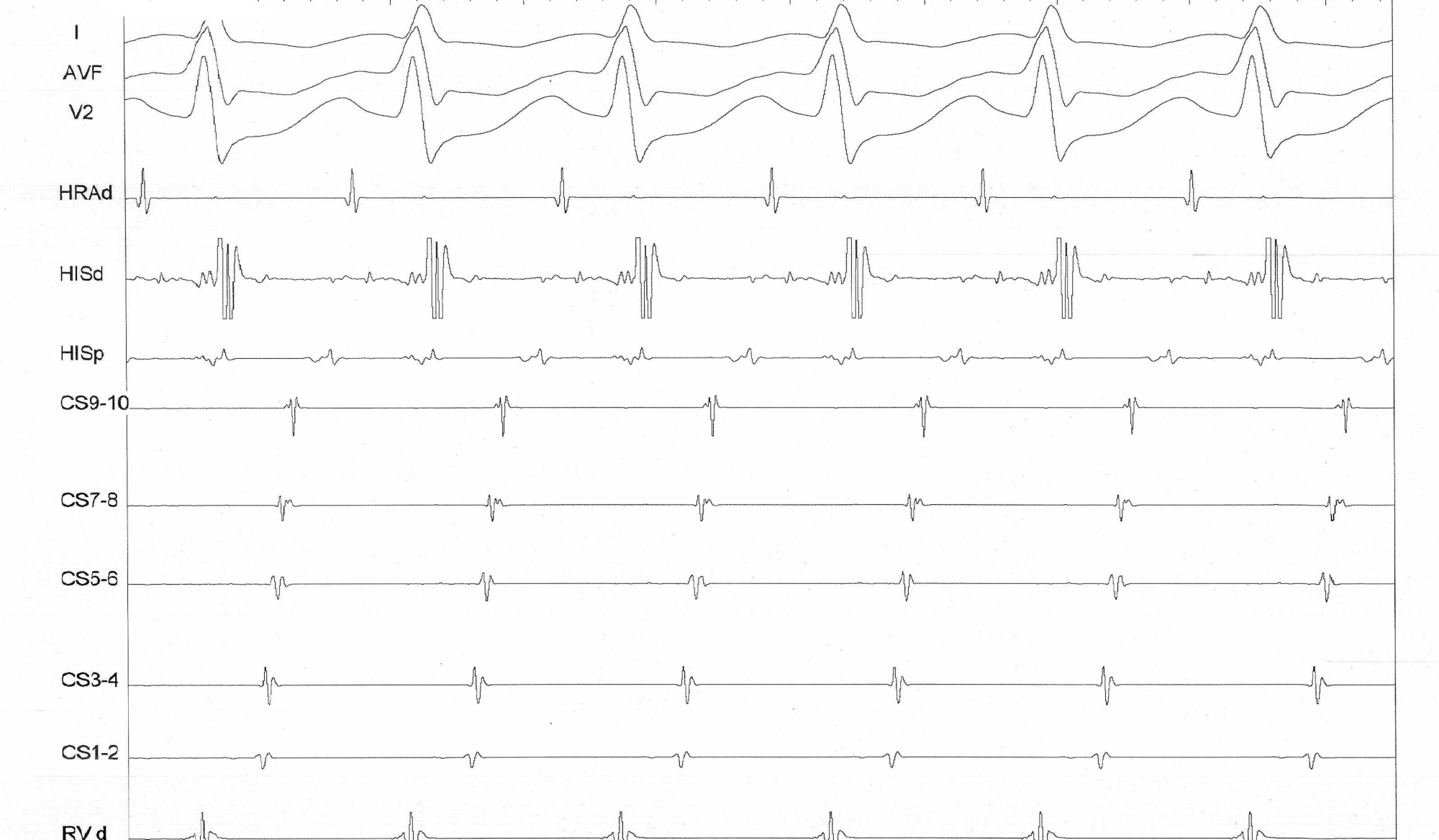
Narrow QRS tachycardia with VA > 70 ms and central VA
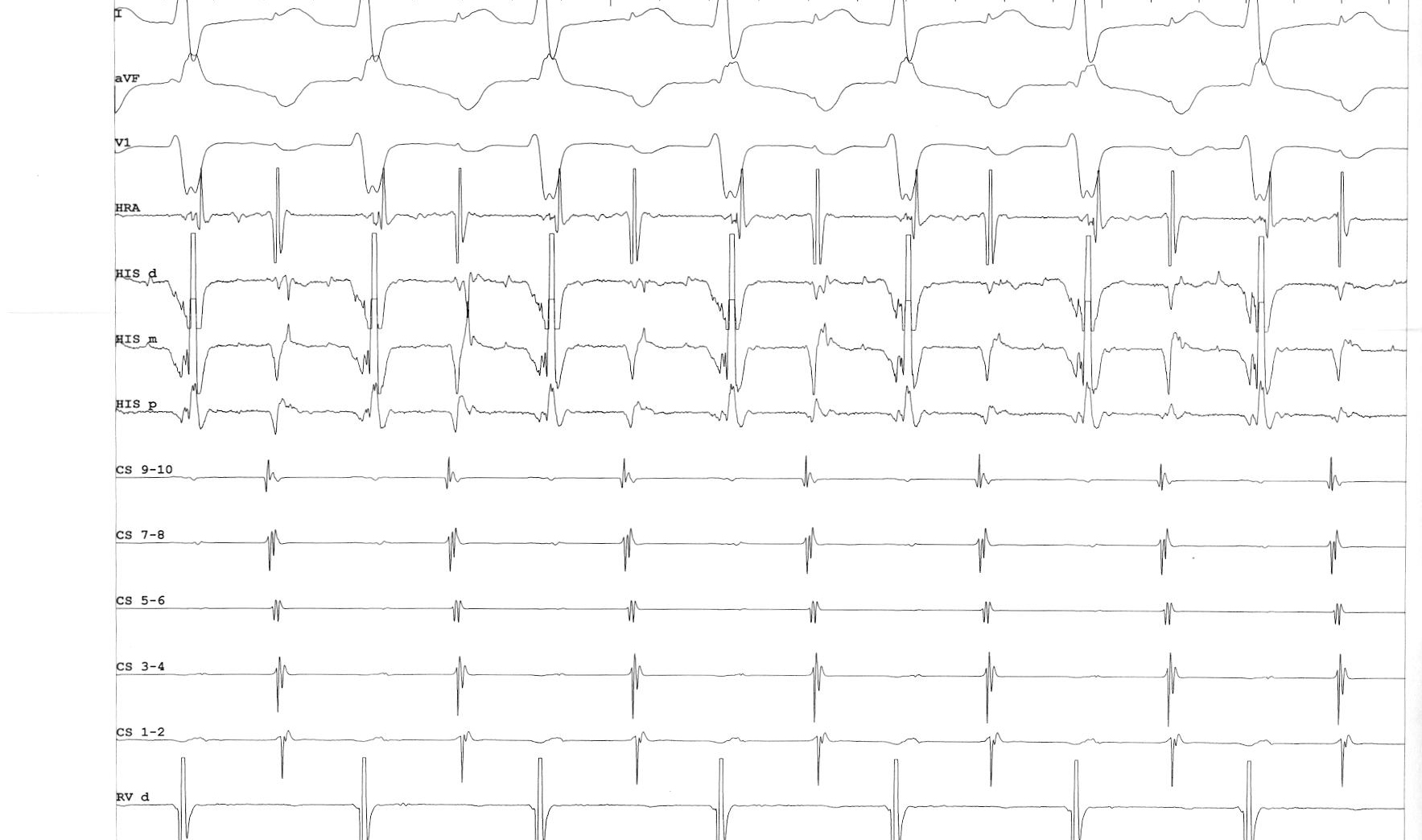
General approach
- What is the situation ?
- What are the differential diagnoses ?
- What are the electrophysiologic differences ?
- What pacing maneuvers can differentiate ?
How to do
- Setup the stimulator
- How to measure
- How to interpret
- Practice
Scenarios
Commonest Setting
- Regular narrow QRS tachycardia
- 1:1 VA
- Atrial activation central
- VA > 70 ms
SVT

Differential diagnoses (important ones)
- AVNRT
- Orthodromic AVRT
- Atrial tachycardia
EP differences
- A / V essential to tachycardia
- Focal versus reentry
- Presence of extranodal pathway
- VA linking
- Distance of circuit from RV apex
- V and A activation - serial versus simultaneous
Chamber essential to circuit
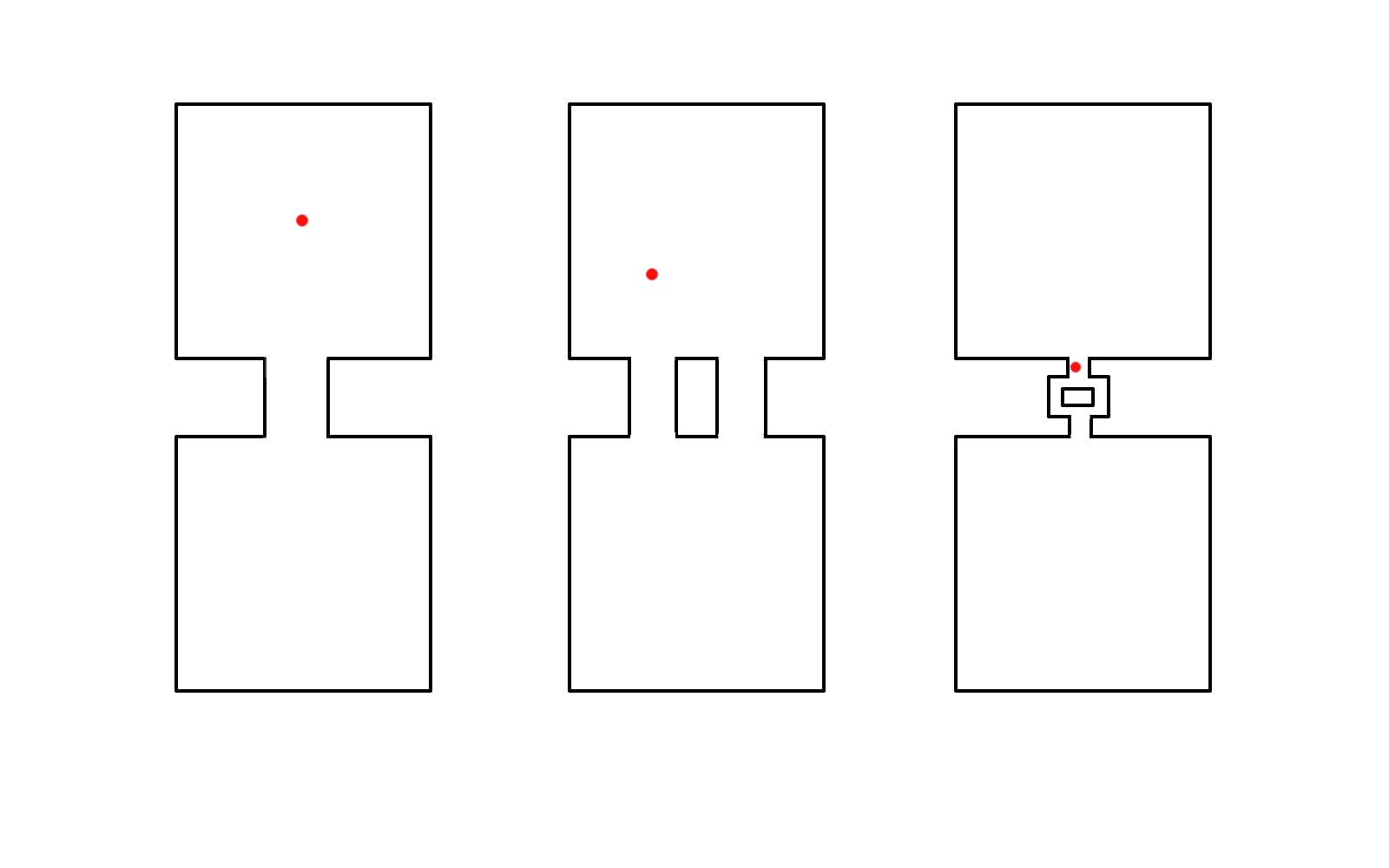
Focal / reentry

Extranodal pathway

VA linking

Distance from RV apex

Sequential vs simultaneous activation
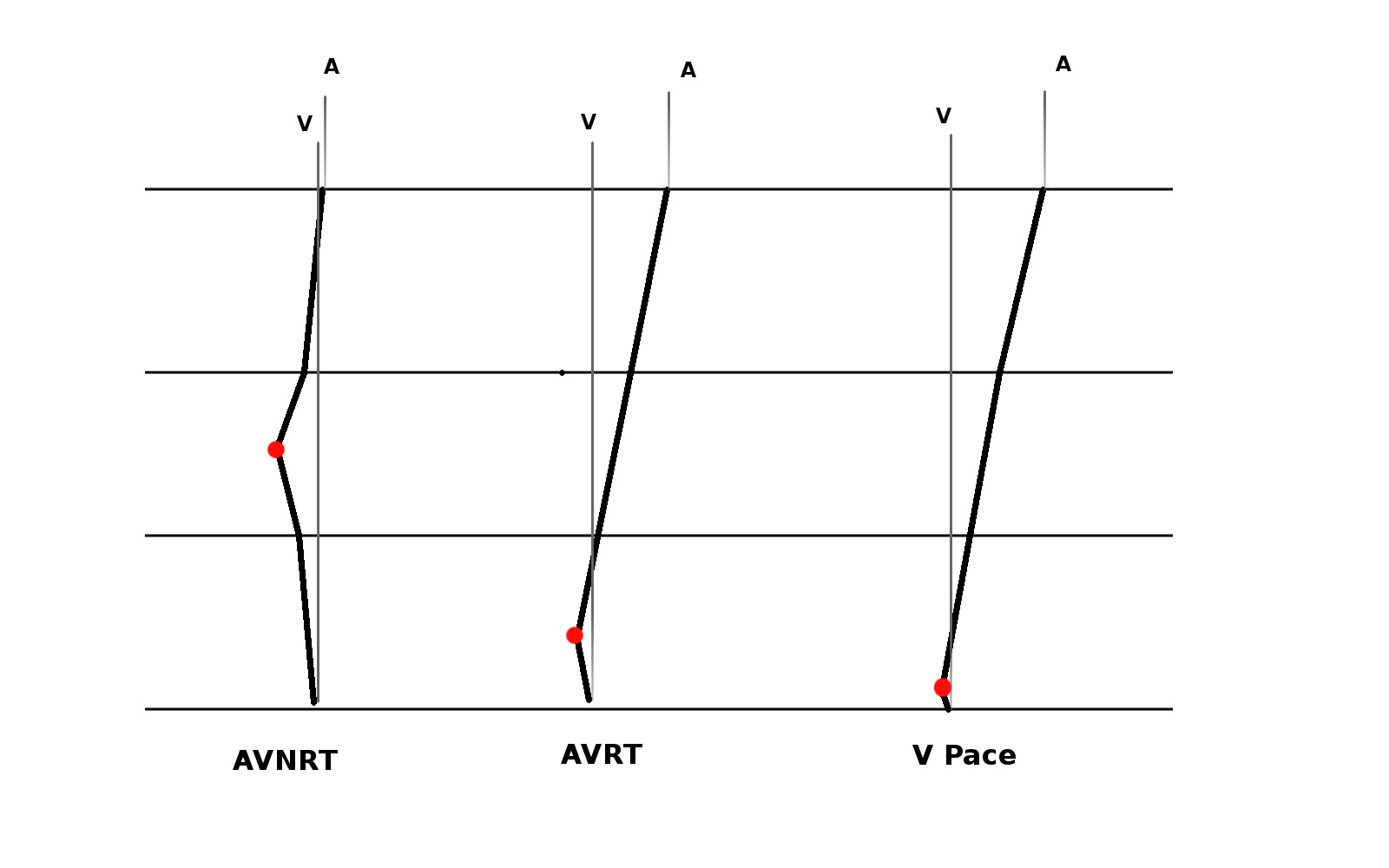
Pacing maneuvers
Single most useful maneuver ?
RV overdrive pacing - most useful maneuver
- Easy to perform and interpret
- Can distinguish AT from AVNRT / AVRT (VAAV versus VAV)
- Can distinguish between AVNRT / AVRT (cPPI-TCL, SA-VA)
- Onset of entrainment can provide clues
- Can help even if not entrained !
Setting up
- Burst pacing from right ventricle
- Sync on
- Tachycardia CL - 30 ms
- Pace until atrium entrained
- Stop pacing
What to look for ?
- Don't 'eyeball'
- Does tachycardia continue ?
- Was the atrium entrained ?
- Which is the last entrained A ?
- Sequence - VAV or VAAV
What to look for ?
- corrected PPI - TCL
- SA - VA
- Is there fusion during entrainment ?
- Beginning of entrainment - A or His ?
- How many beats to entrain ?
RV pacing in narrow QRS tachycardia - Rule out (or in) AT
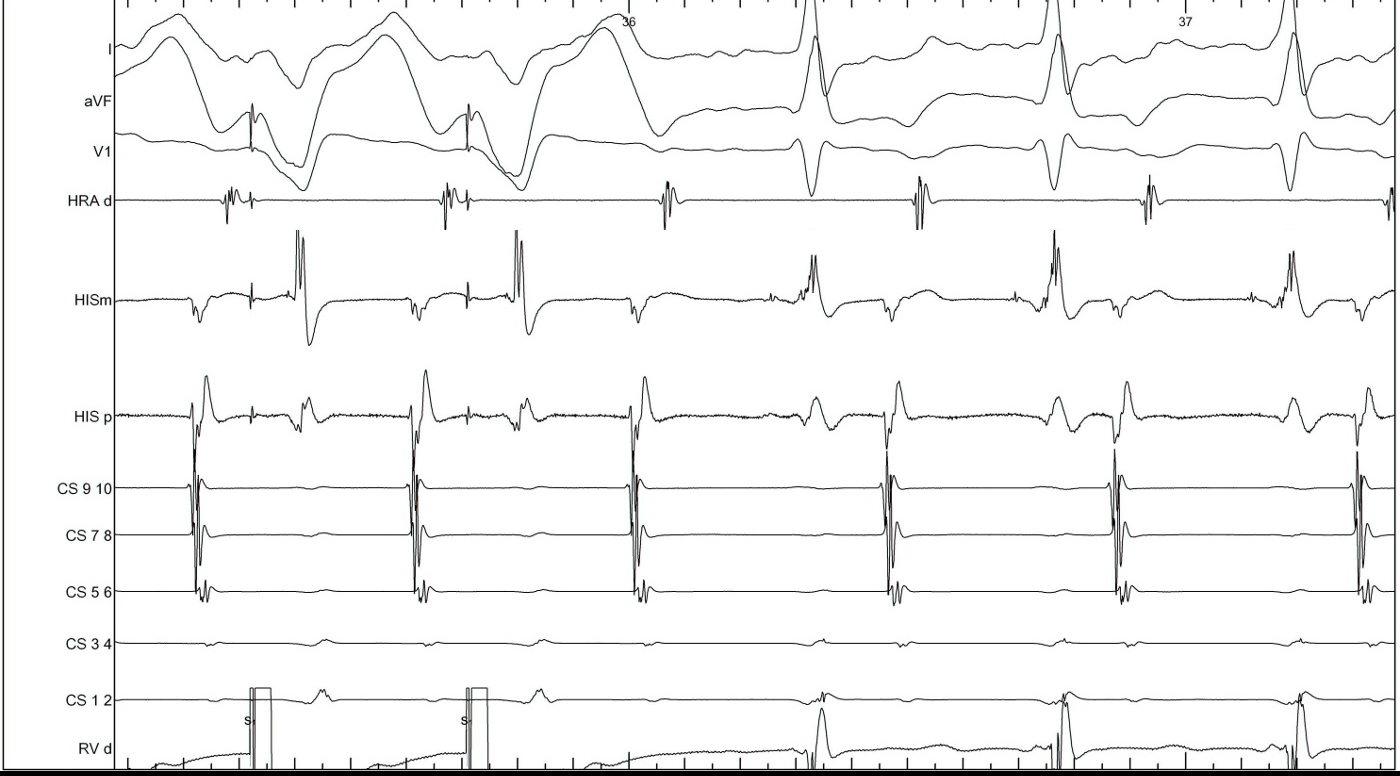
RV pacing in narrow QRS tachycardia - Rule out (or in) AT
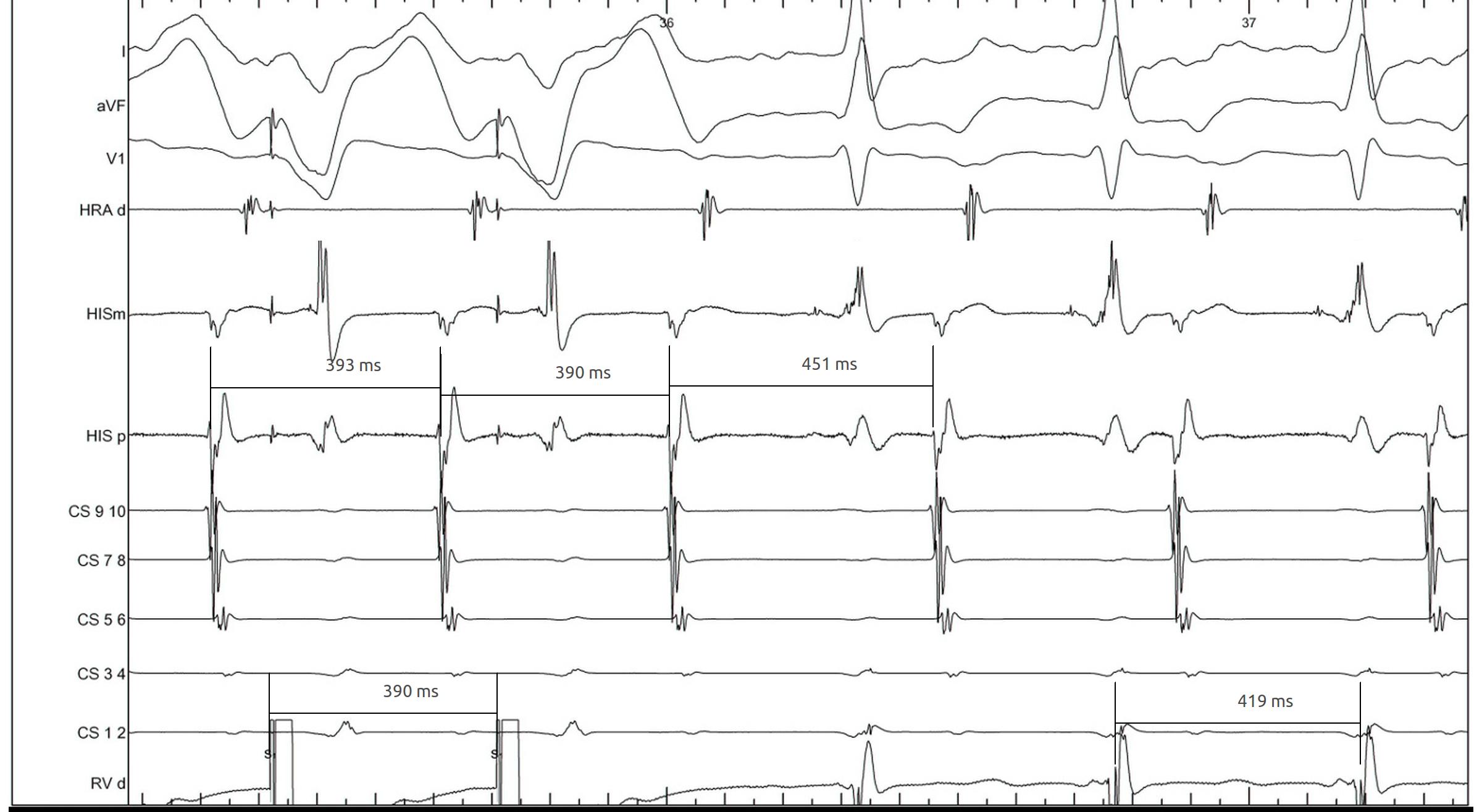
RV pacing in narrow QRS tachycardia.
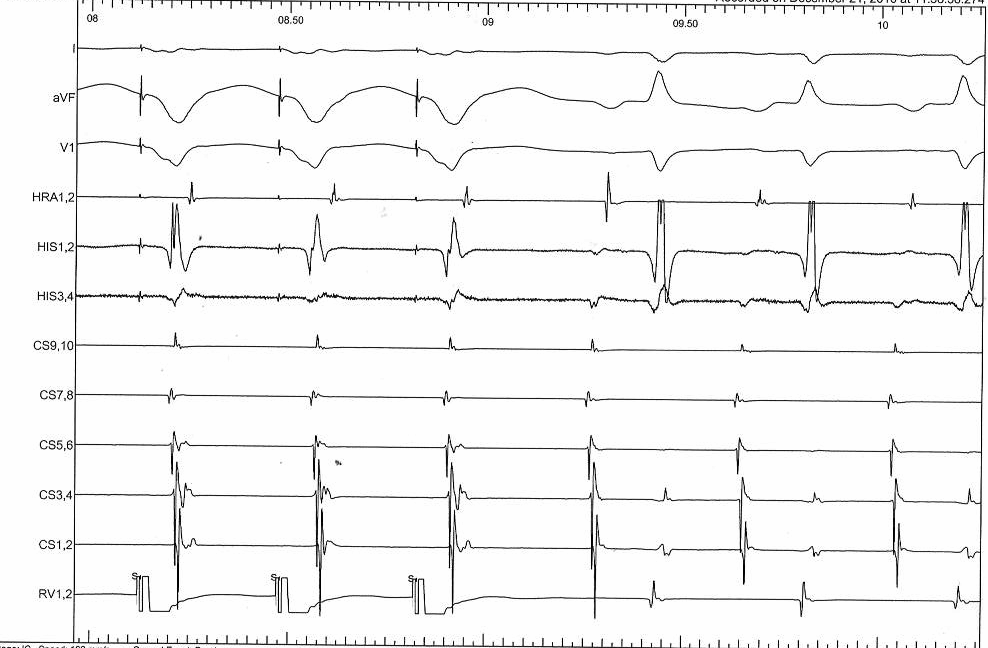
Why all this fuss about measurement ?
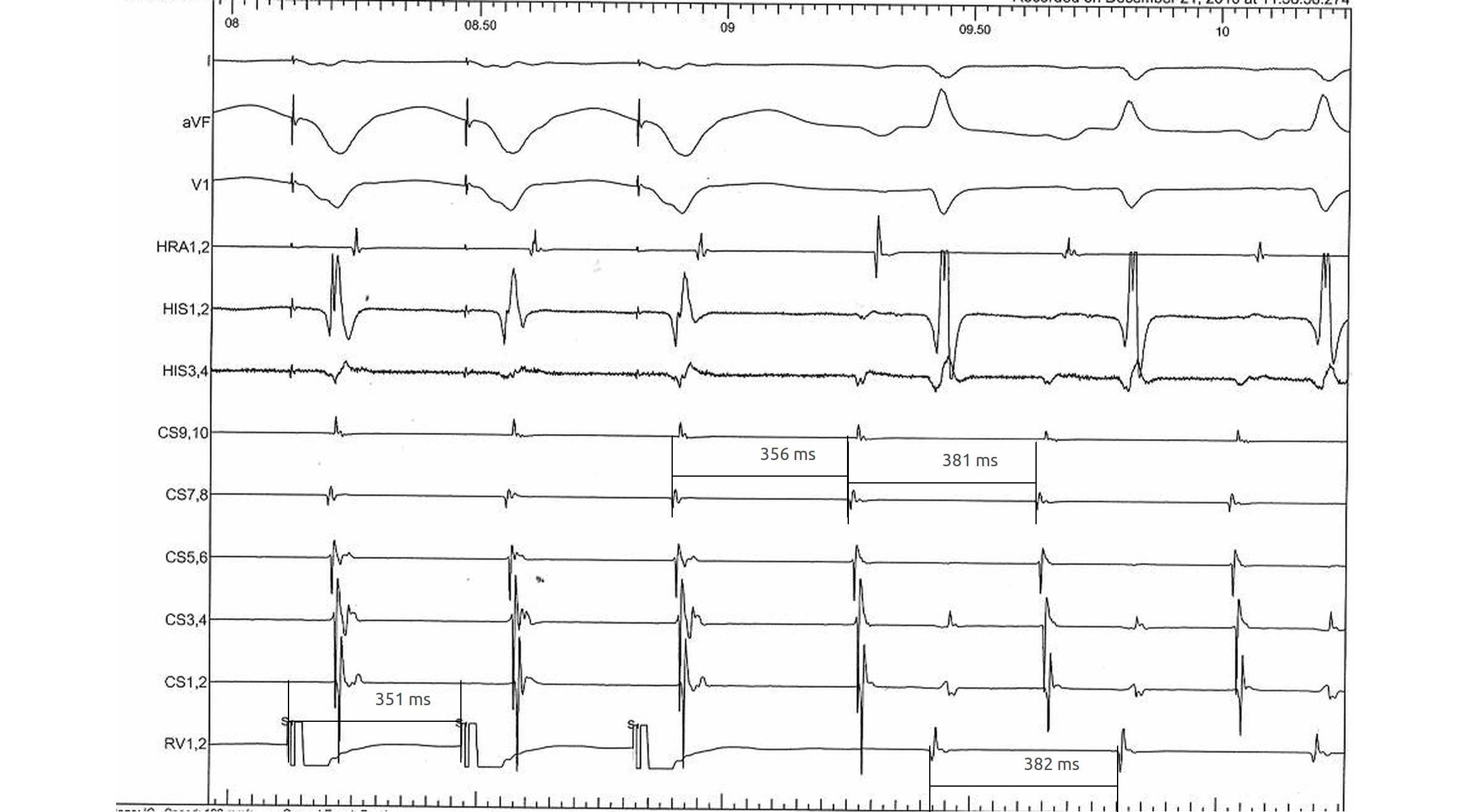
RV pacing in AT - VAAV
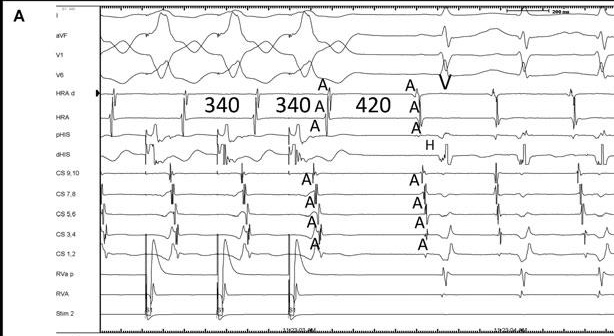
RV pacing in narrow QRS tachycardia - AVNRT / AVRT
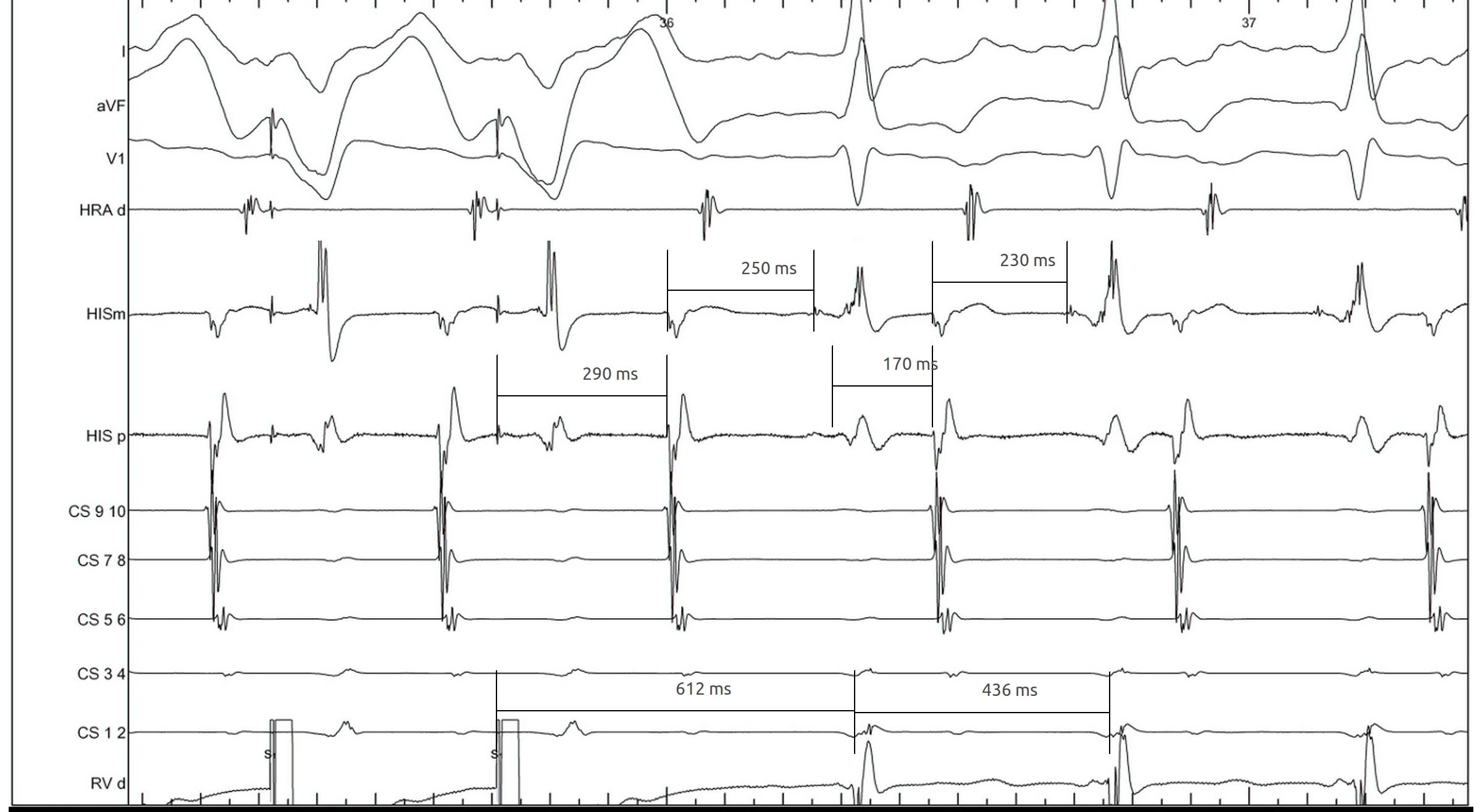
SA / VA intervals
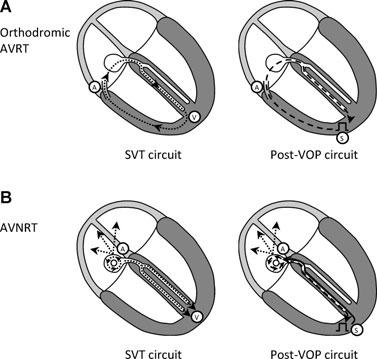
Fusion during entrainment ?

Entrainment
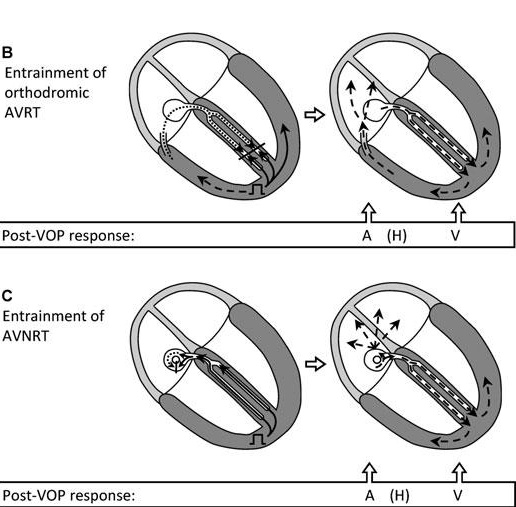
Beginning of entrainment can give a clue
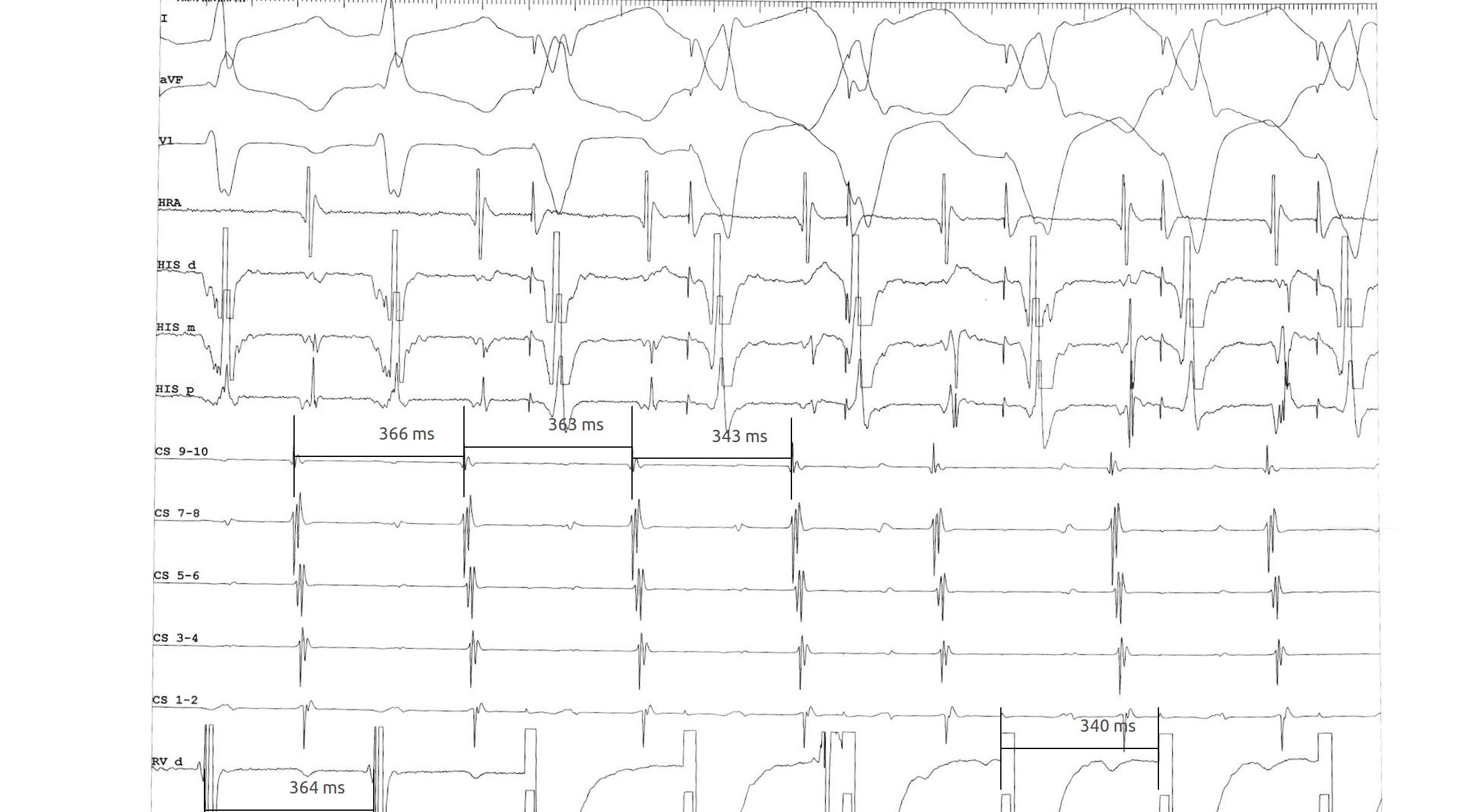
- Atrial acceleration in transition zone
- A entrainment before H entrainment
Could not entrain - useful information ?
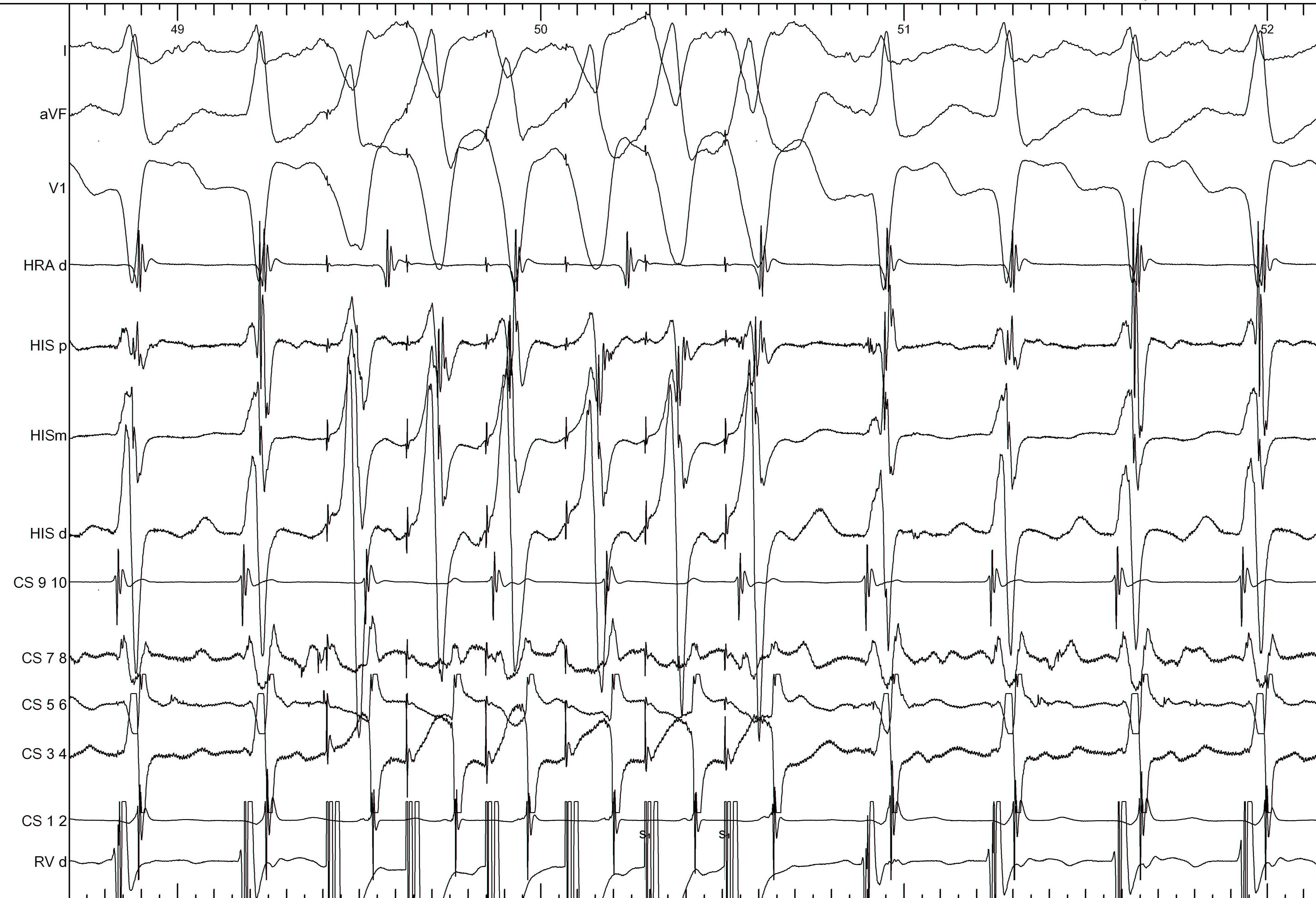
Summary
- VAAV identifies AT, VAV rules out
- SA - VA and PPI - TCL are longer for AVNRT
- Can use basal pacing if responses are equivocal
- A entrained earlier for AVRT, entrained before His
His refractory PVC
- Little more difficult to perform and interpret
- Very useful maneuver
- Especially differentiate septal AP from AVNRT
His refractory PVC - setting up
- R synchronised single extrastimuli
- Check that sync is working
- Start 30 ms less than RR
- Decrement by 10 ms
- Continue until refractoriness or tachycardia termination
His refractory PVC - measurement and interpretation
- Confirm cycle length is stable
- Measure AA around each PVC to find longest CI at which PVC preexcites A
- Decide if His is refractory at this time
His refractory PVCs - responses
- Advance atrial activation without change in sequence
- Delay atrial activation without change in sequence
- Terminate tachycardia without conduction to atrium
- Does not alter atrial activation
PVC during tachycardia
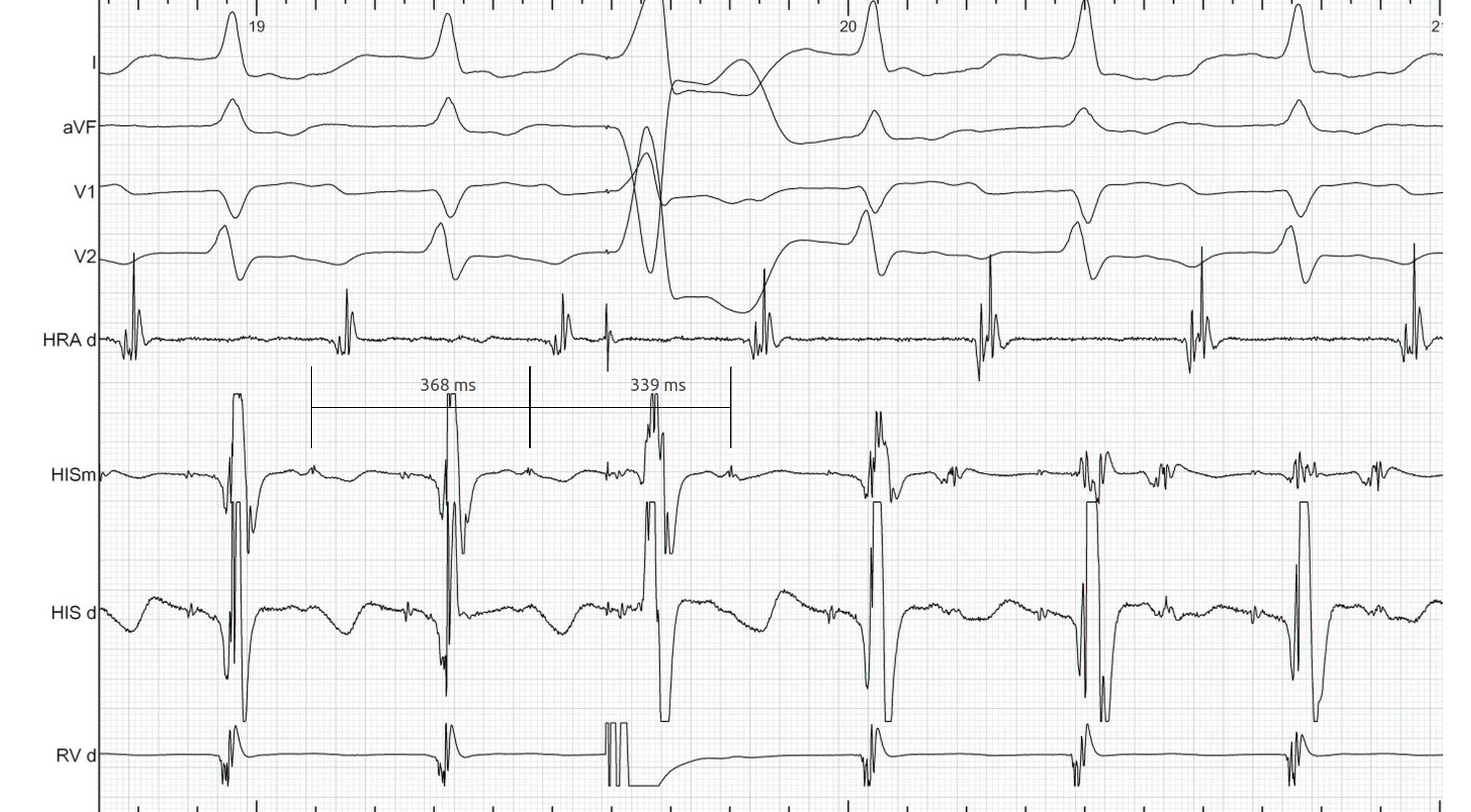
PVC terminates tachycardia
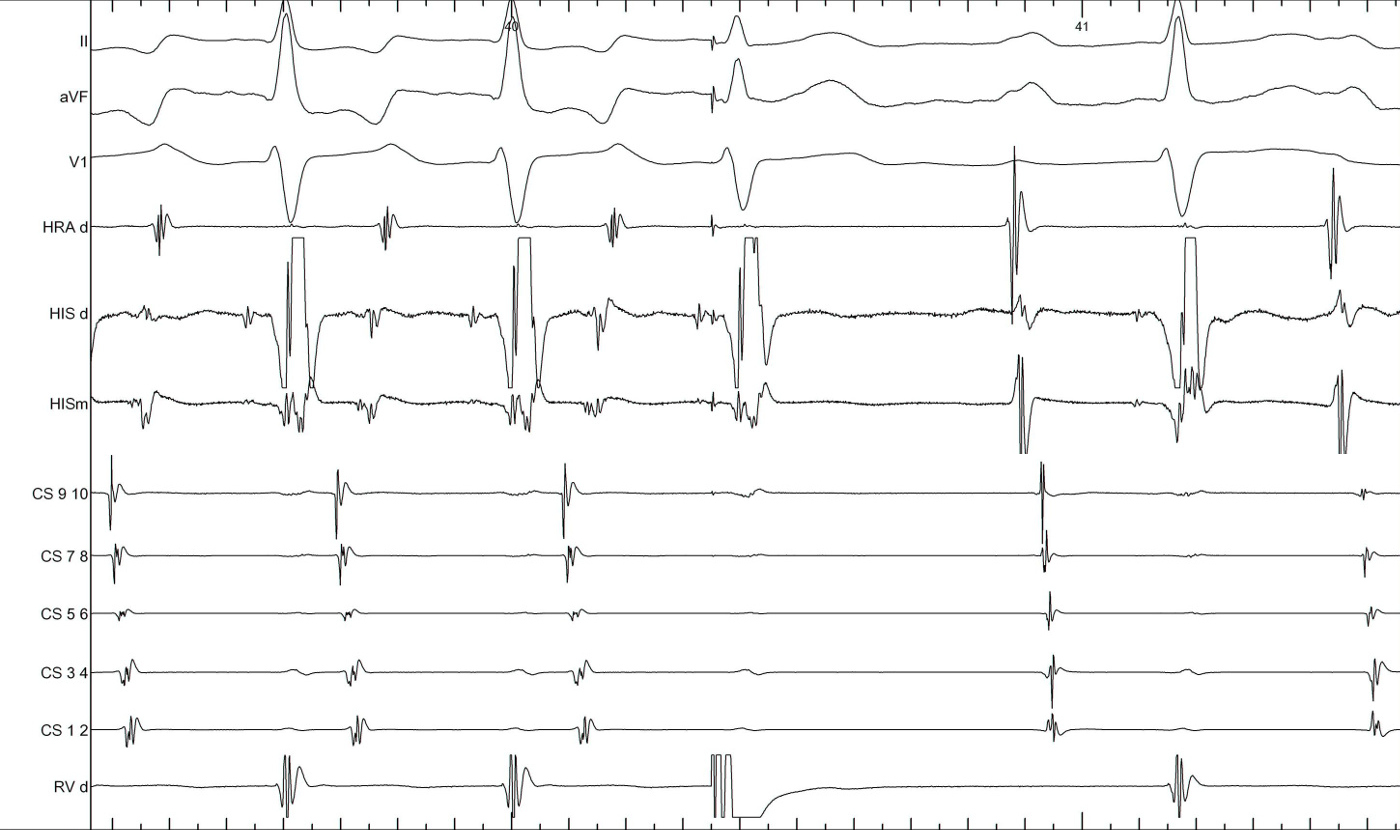
Other clues during narrow QRS tachycardia
- VA unlinking - spontaneous or after atrial burst
- Cycle length and VA changes with bundle branch block
- Spontaneous termination
Spontaneous termination
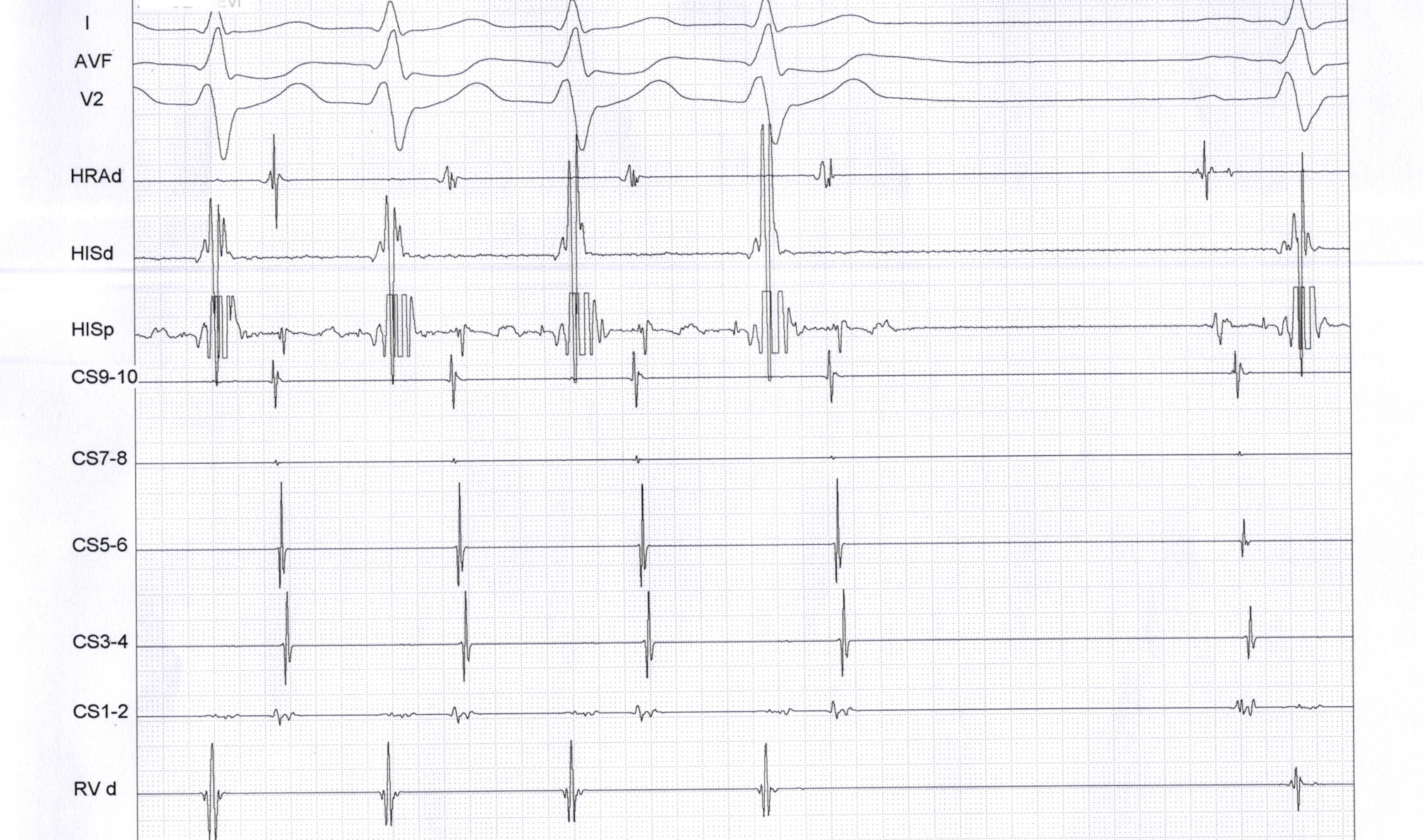
Bundle branch block
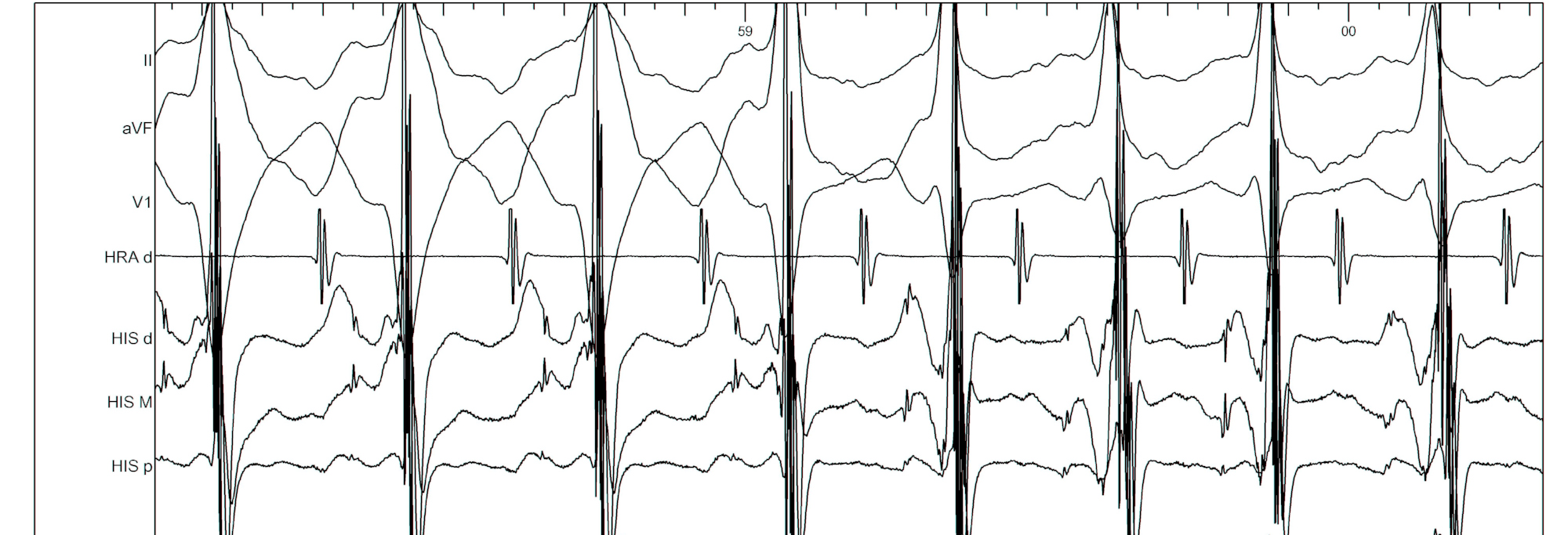
Bundle branch block
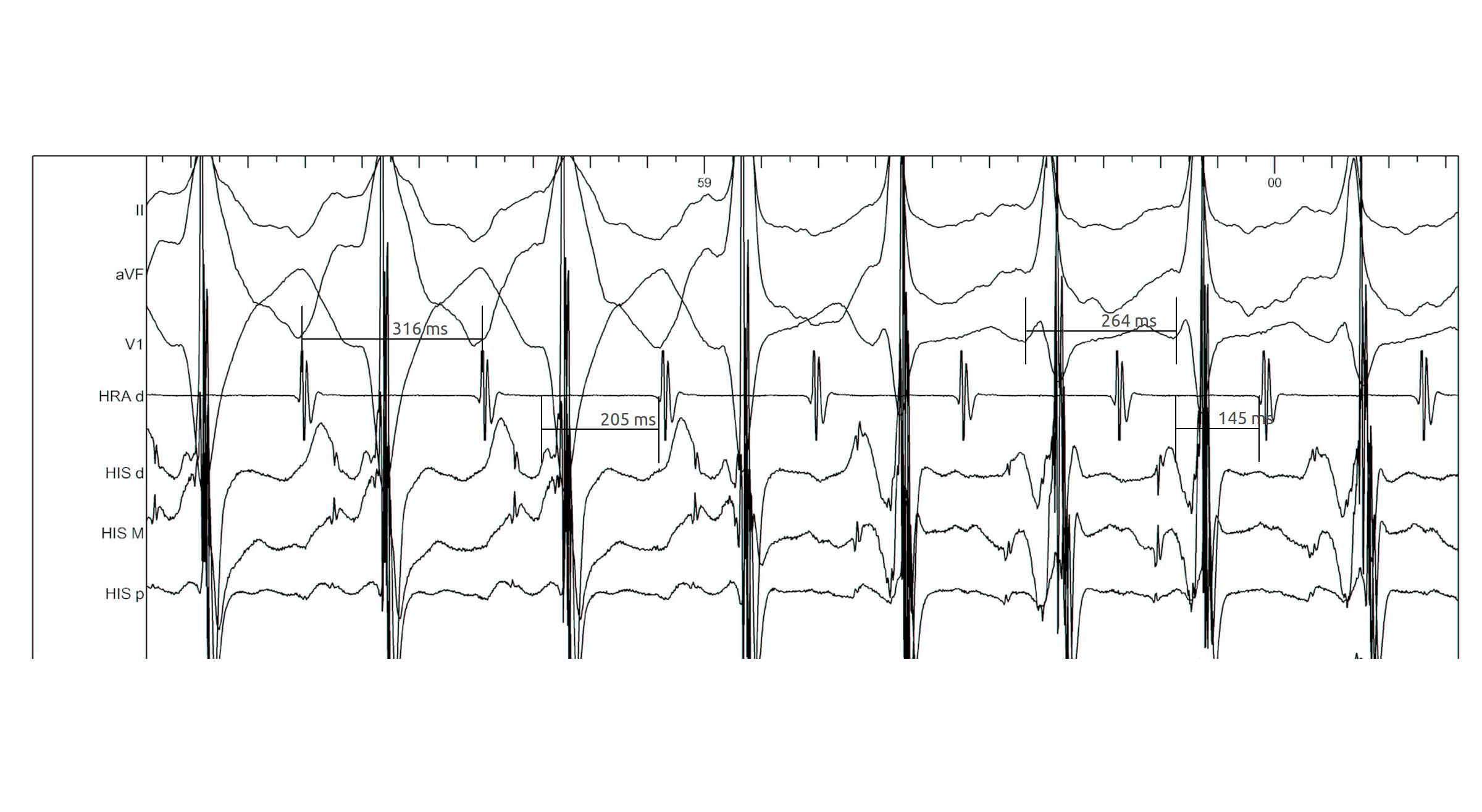
Bundle branch block
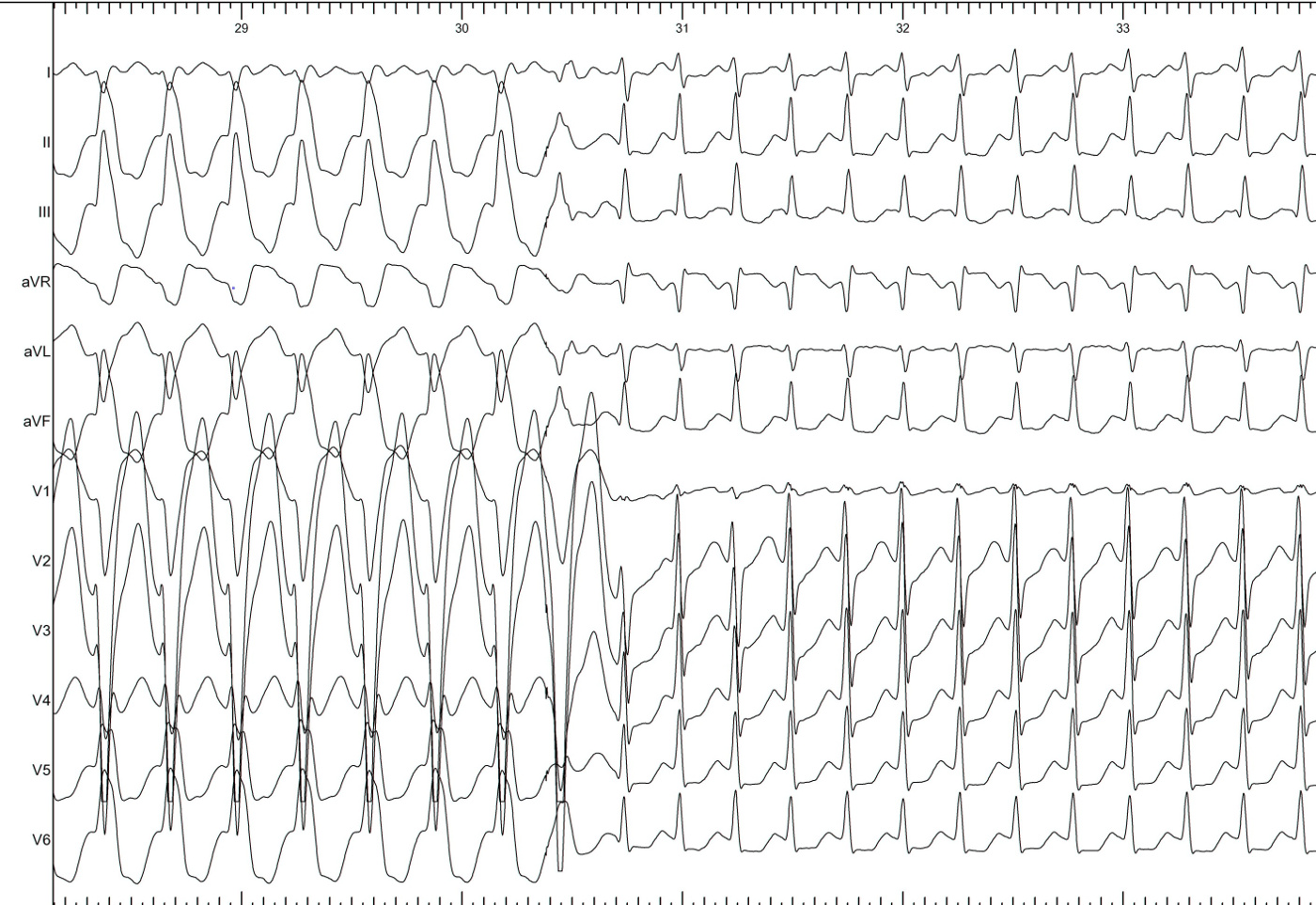
Maneuver in sinus rhythm - Central VA conduction with ventricular pacing
Scenario
Central VA conduction
Setting
- During ventricular pacing, 1:1 VA conduction
- Central atrial activation
Differential diagnoses
- Nodal conduction
- Septal accessory pathway
EP differences
- Decremental conduction
- His is a waypoint
- Distal insertion (entry point)
- Adenosine sensitivity
Decremental single ventricular extrastimuli
- Easy to perform (must be routine)
- Atrial activation pattern
- VA interval - Decremental conduction
- VA relation to VH
Setting up and measurements
- Pace from RV apex
- His catheter and RA / CS catheters
- Decrement by 10-20 ms
- VA interval measured to earliest A
Decremental conduction
- Classical property of nodal conduction
- Can also be seen with AP
- How to differentiate
RV 500/300 ms
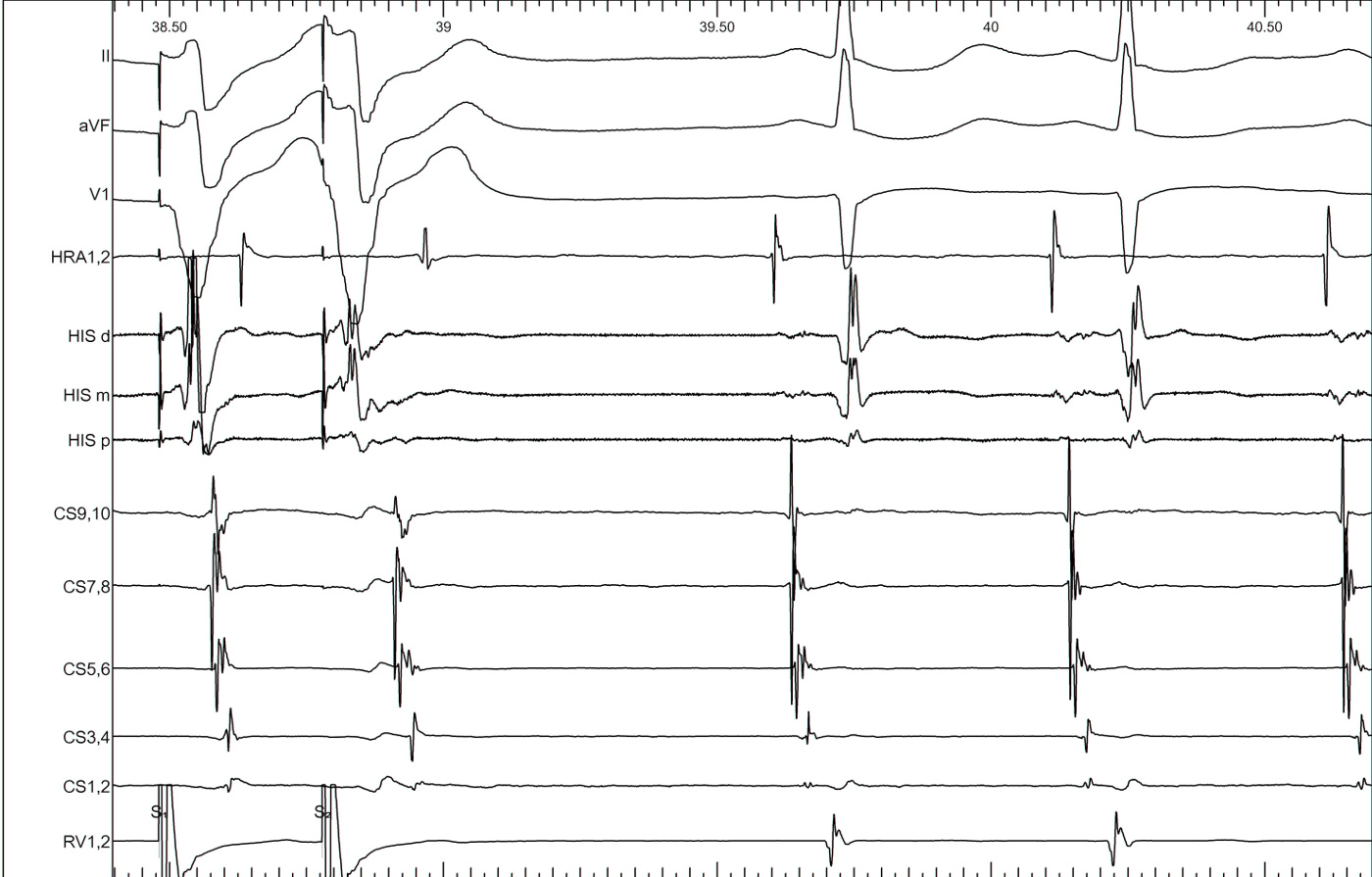
RV 500/280 ms
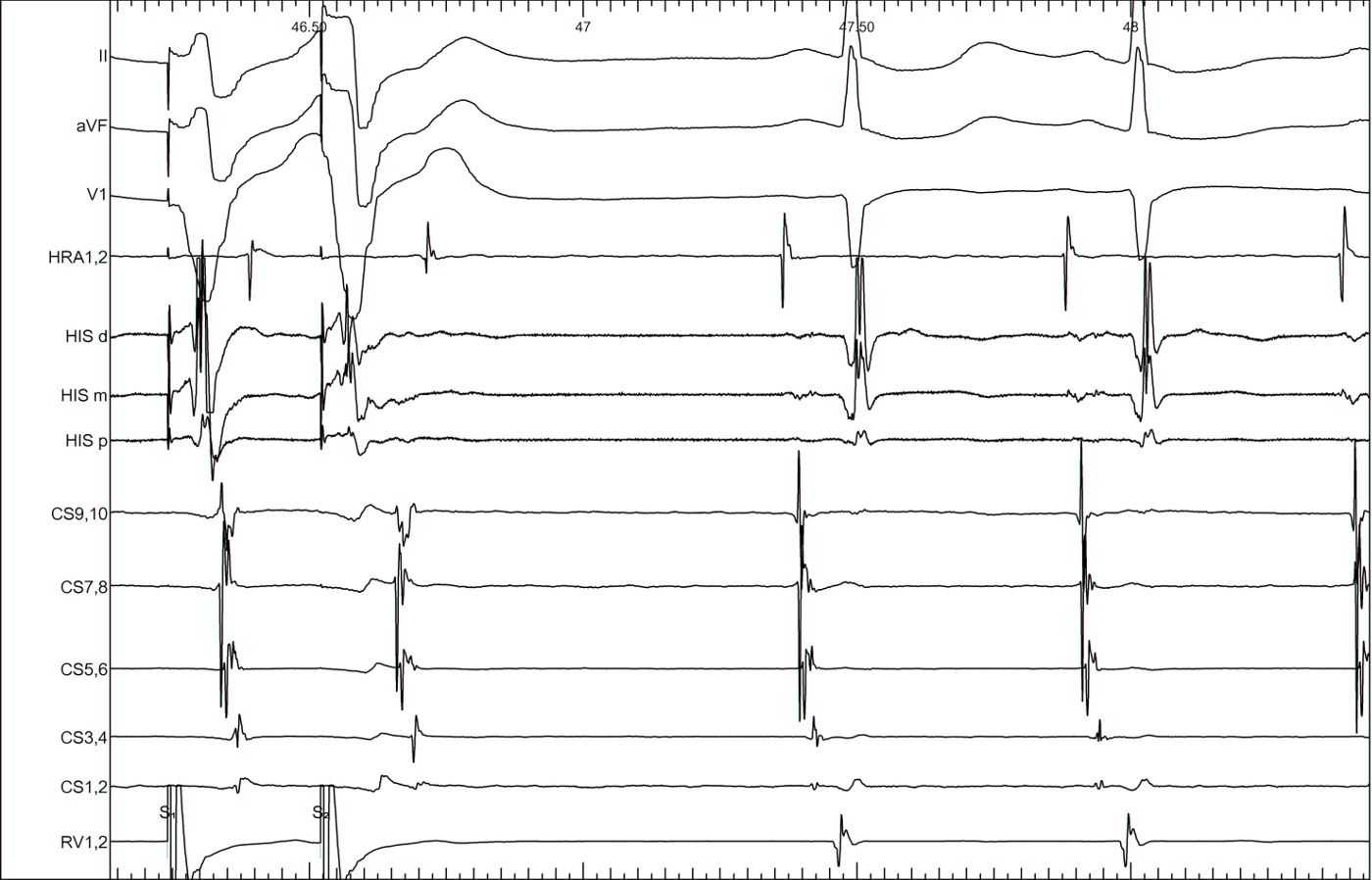
RV 500/260 ms
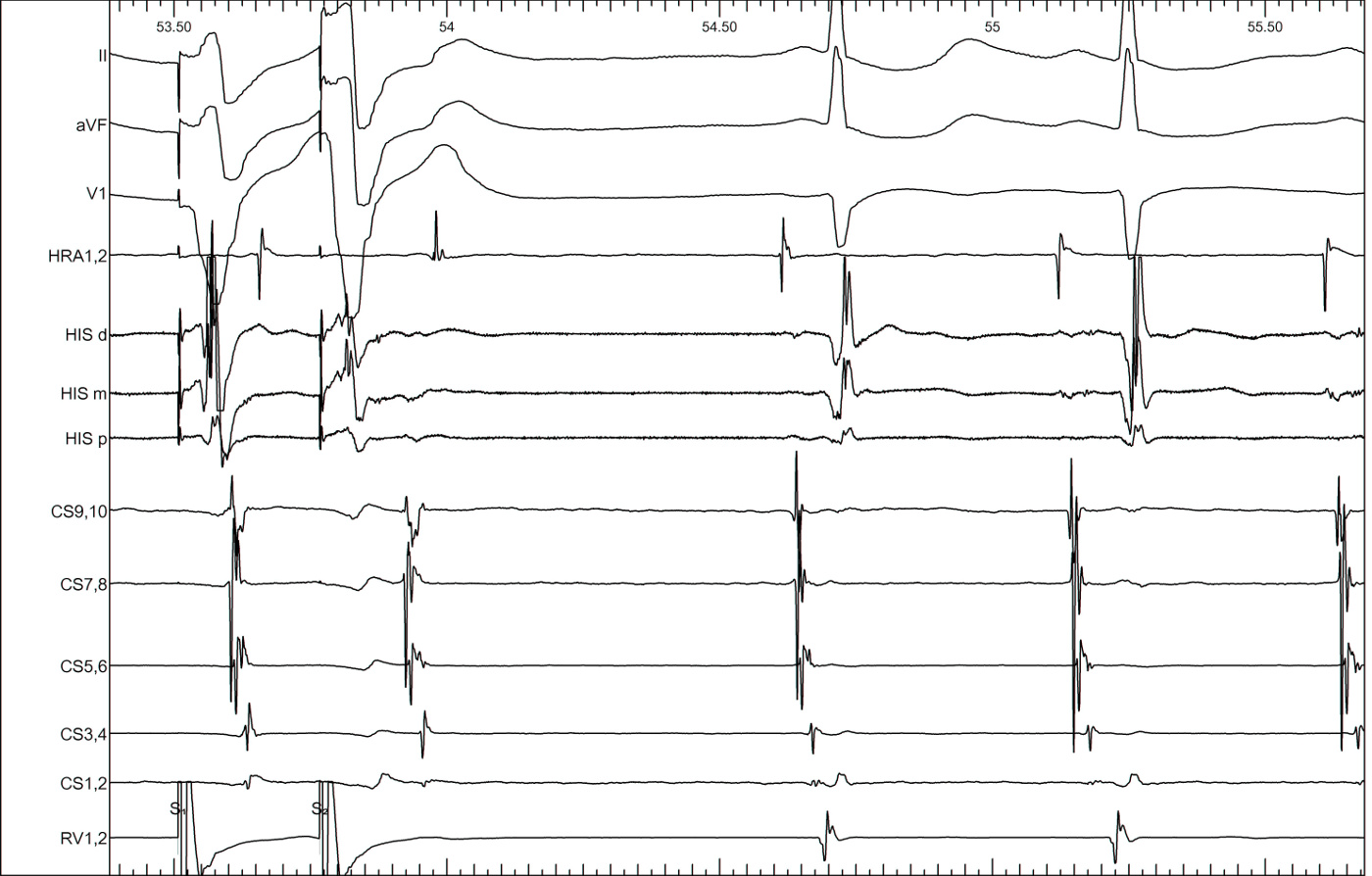
Parahisian pacing
- Somewhat difficult to perform
- Often difficult to interpret
- Still very useful sometimes
Parahisian pacing
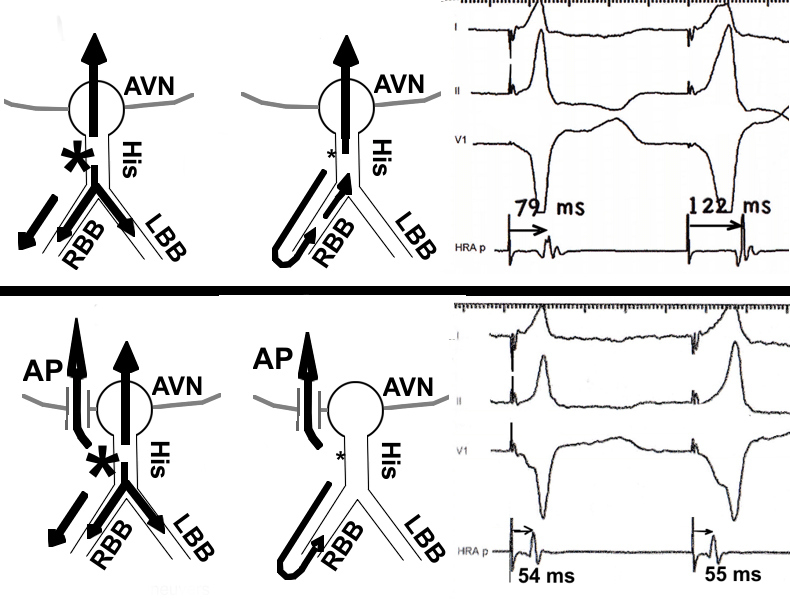
Parahisian pacing - setting up
- His catheter, slightly pushed in (small A)
- Start with low output and increase gradually
- Watch QRS morphology for intermittent His capture
Parahisian pacing - interpretation
- His capture - narrower QRS, His not seen, RVA early
- Beware of atrial capture
- Beware of pure His capture
- Narrower QRS
- Isoelectric interval from pacing spike to QRS
Parahisian pacing - interpretation
- Identify beats with and without His capture
- Look at atrial activation sequence
- Measure VA interval
Parahisian pacing - with His capture
- Nodal conduction - same sequence, shorter VA
- AP conduction - same sequence, same VA
- Mixed response - different sequence, shorter VA
Parahisian
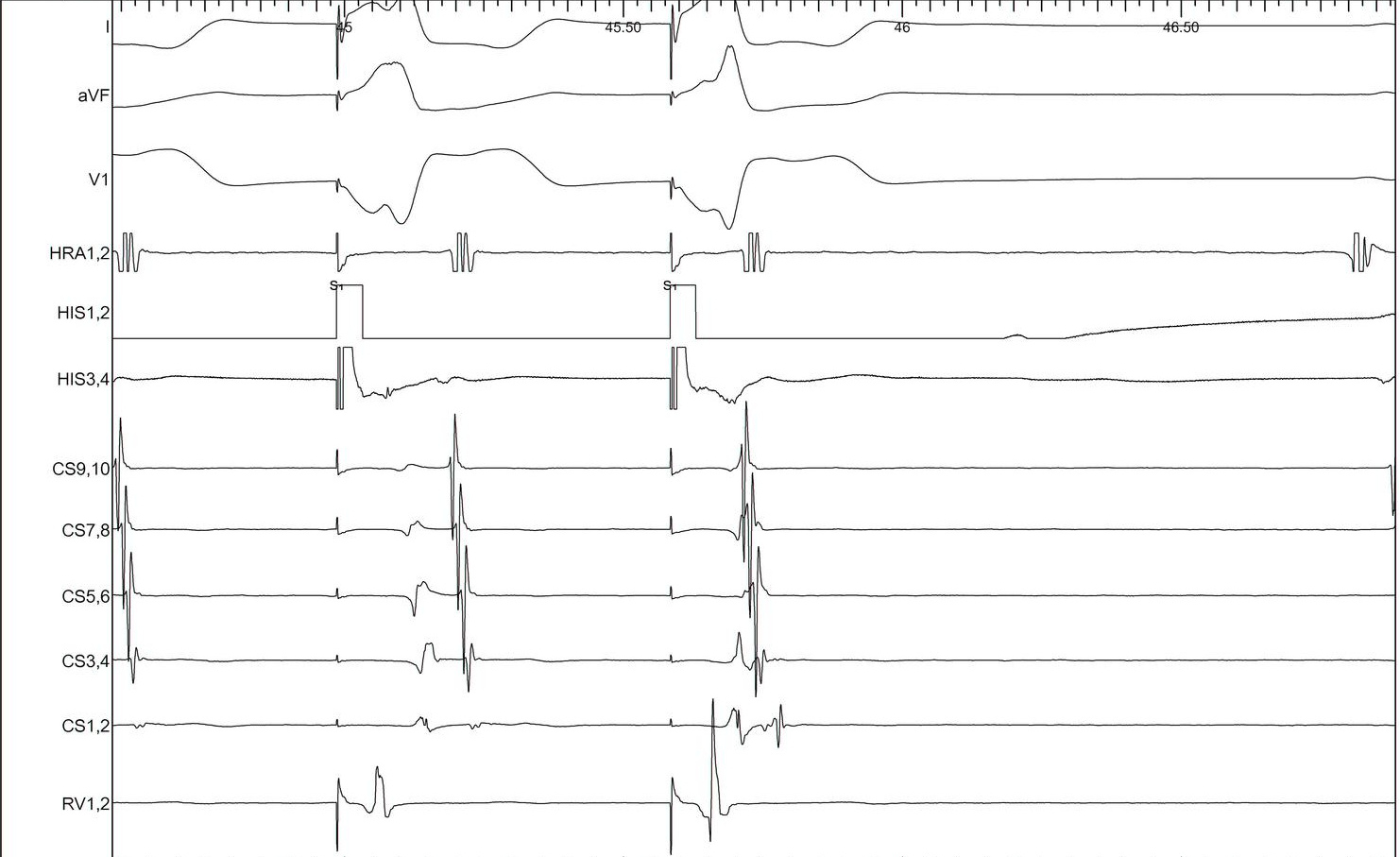
Parahisian
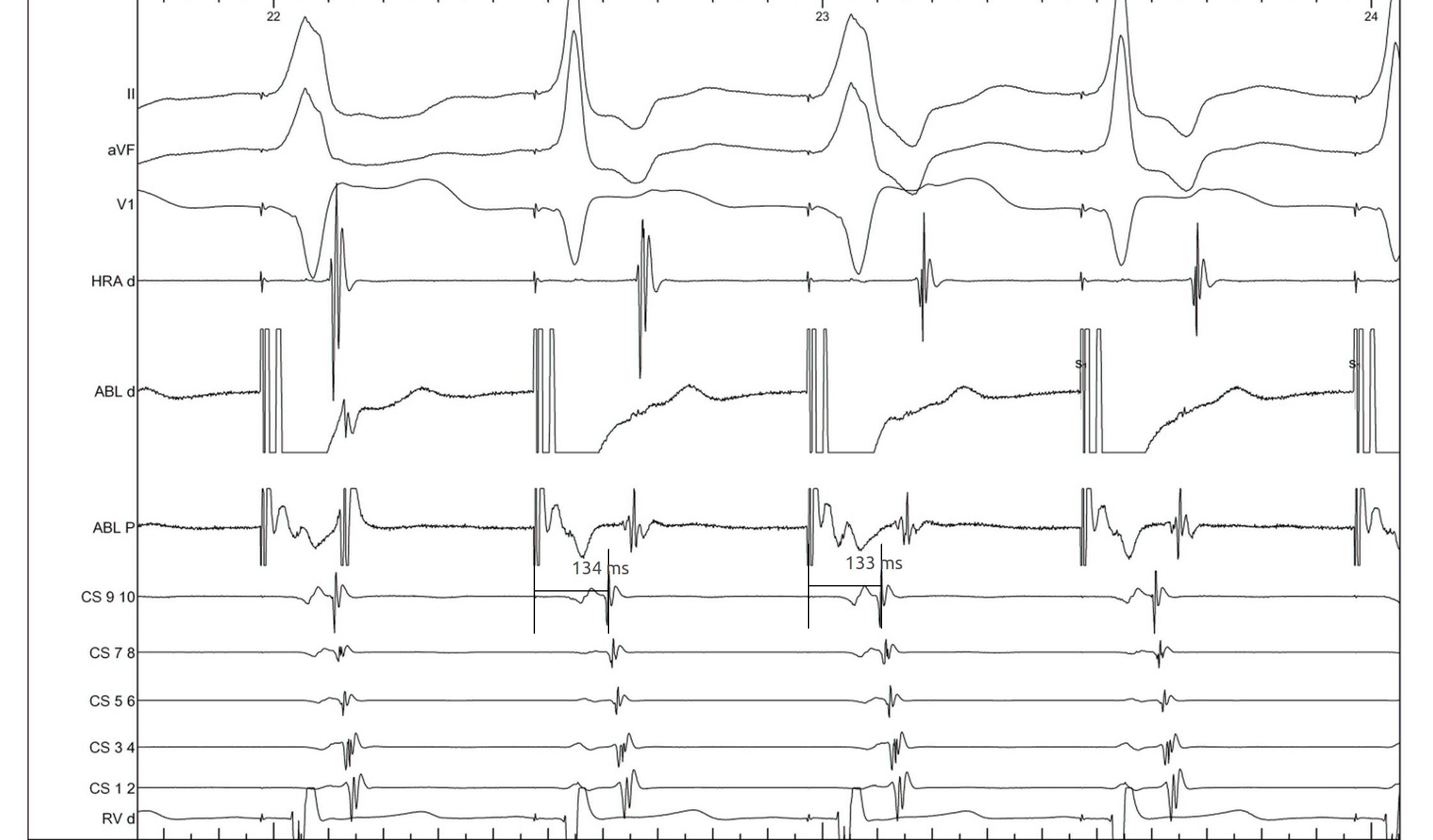
Pre-ablation
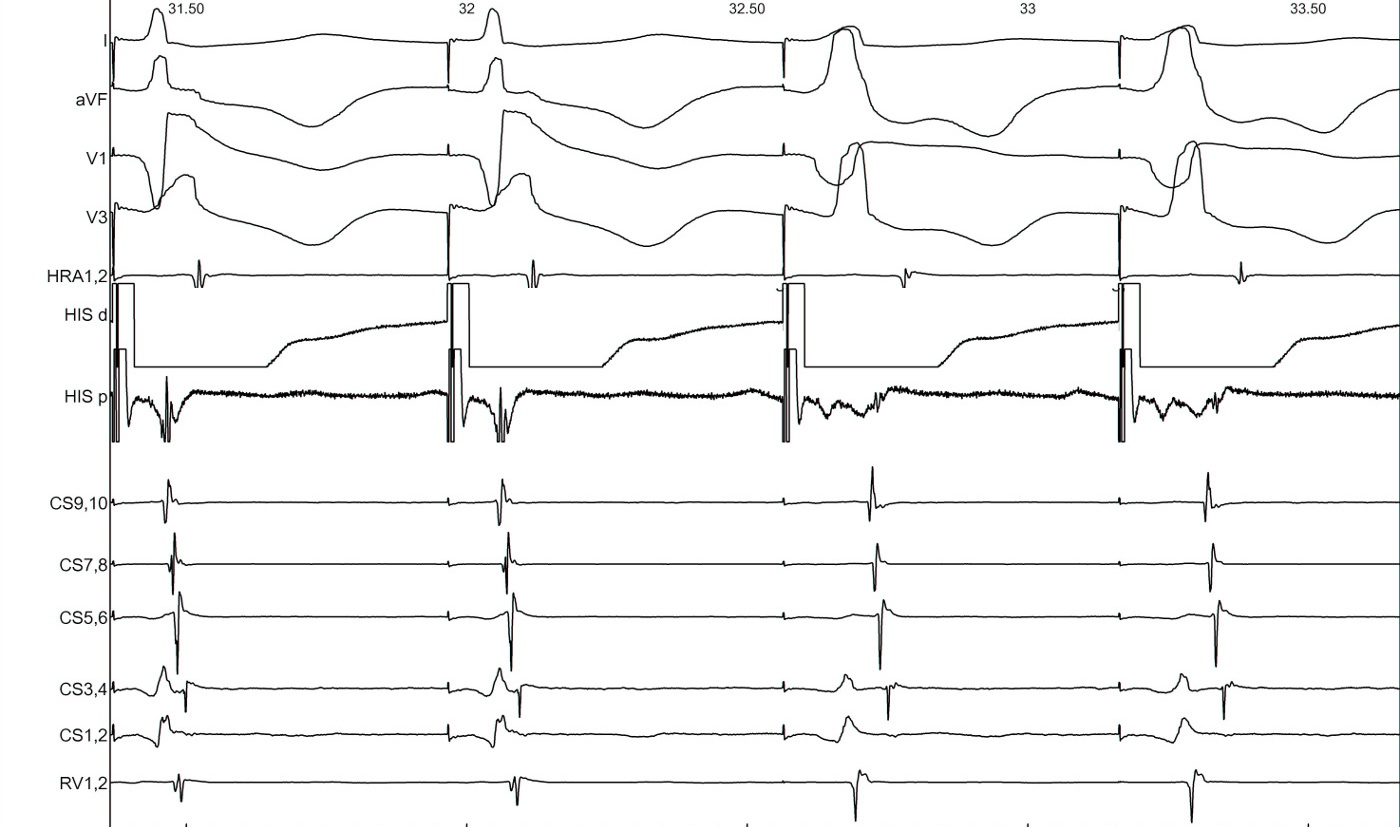
Post ablation
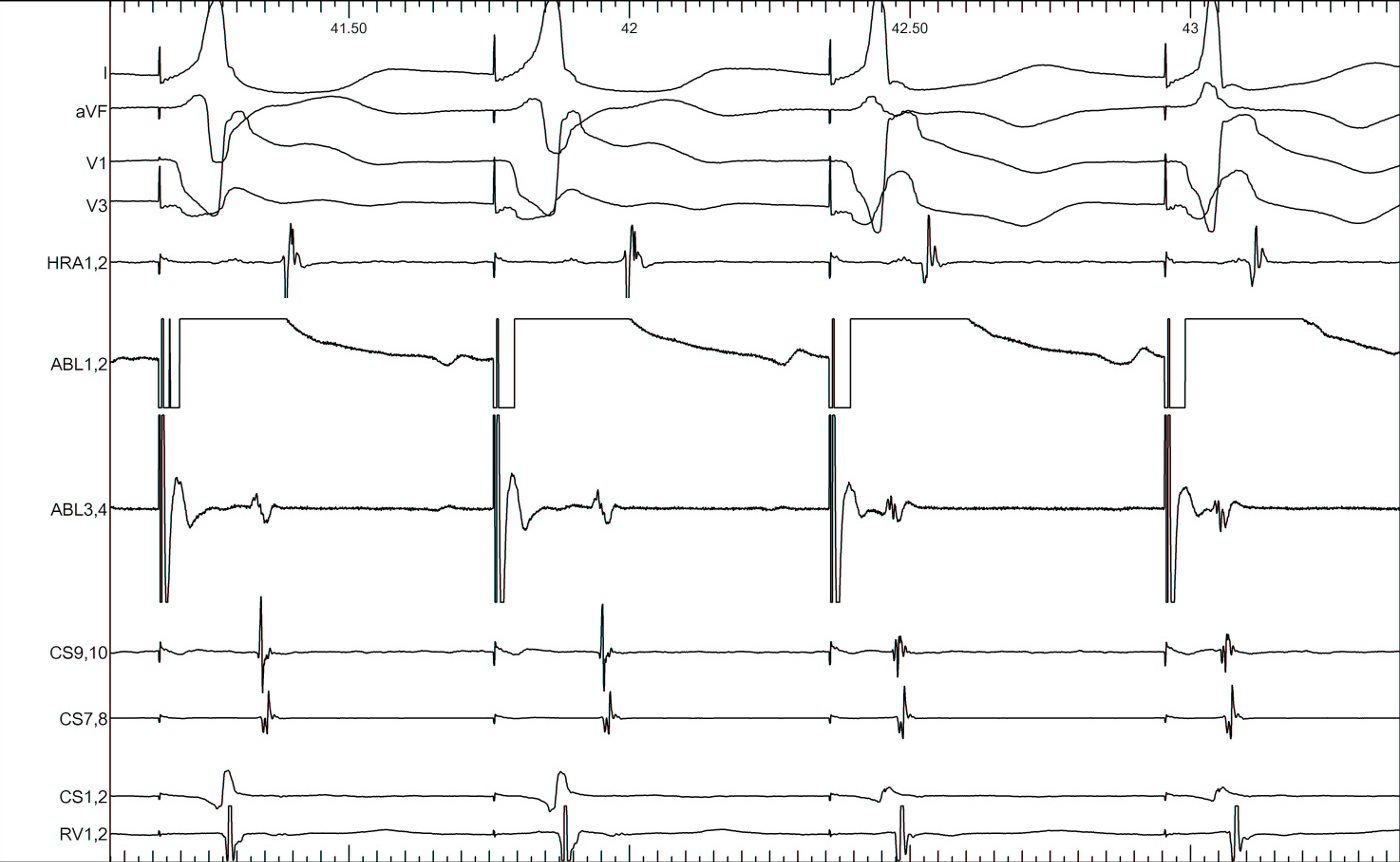
Other maneuvers
Response to adenosine
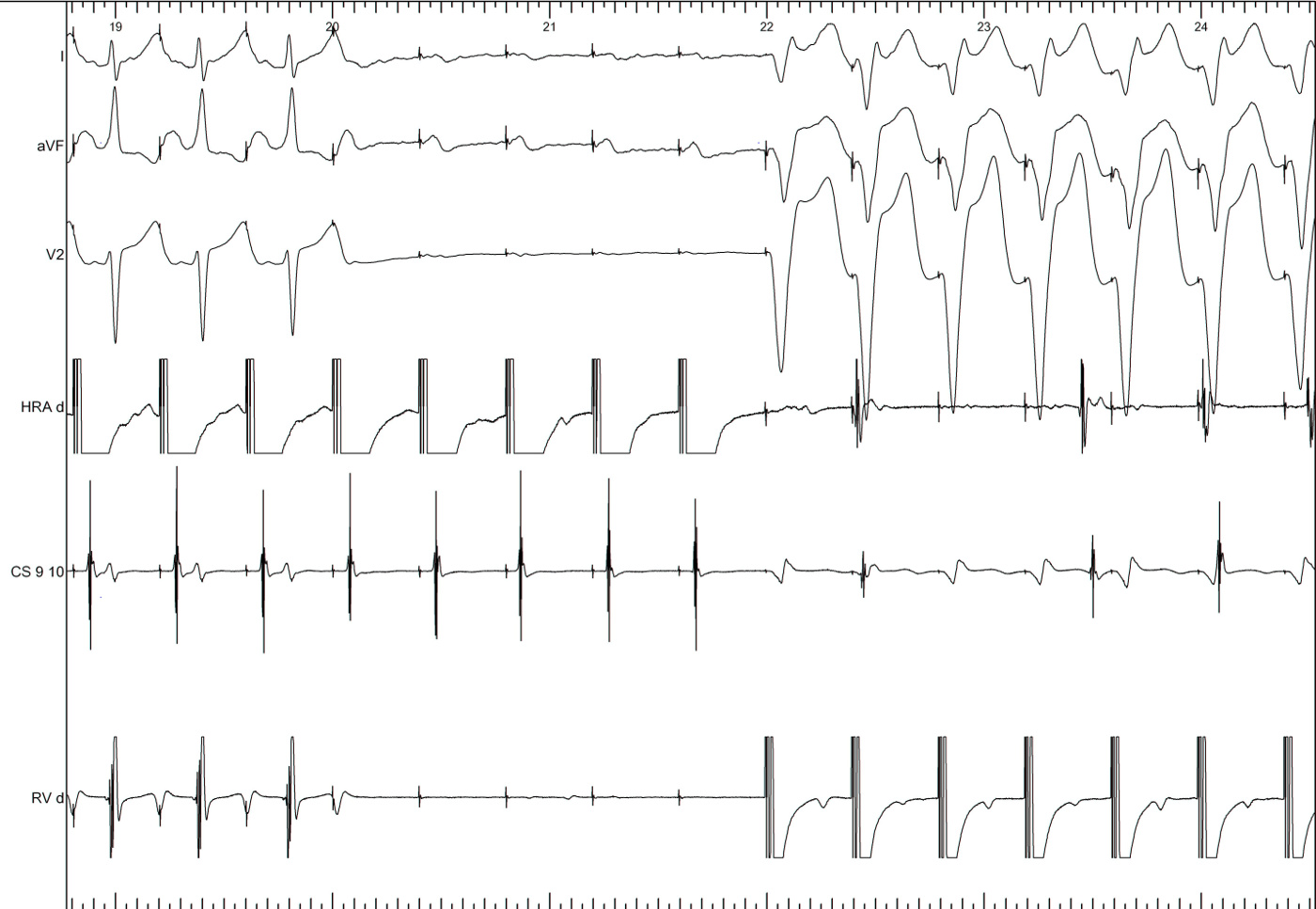
Differential pacing
- VA interval during pacing from apex and base
- Shorter from apex for nodal conduction
- Shorter from base for AP conduction
RV apex pacing
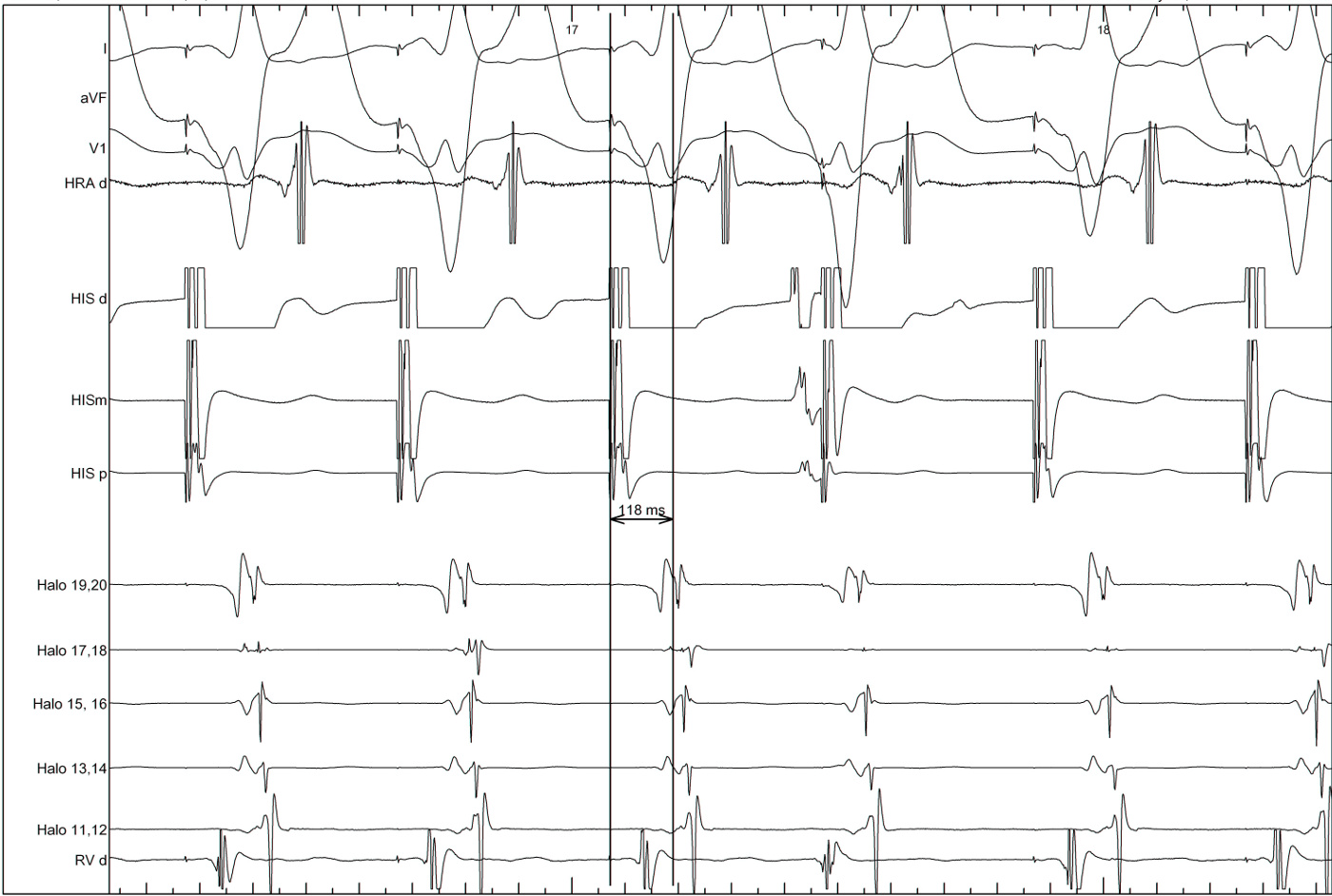
RV base pacing
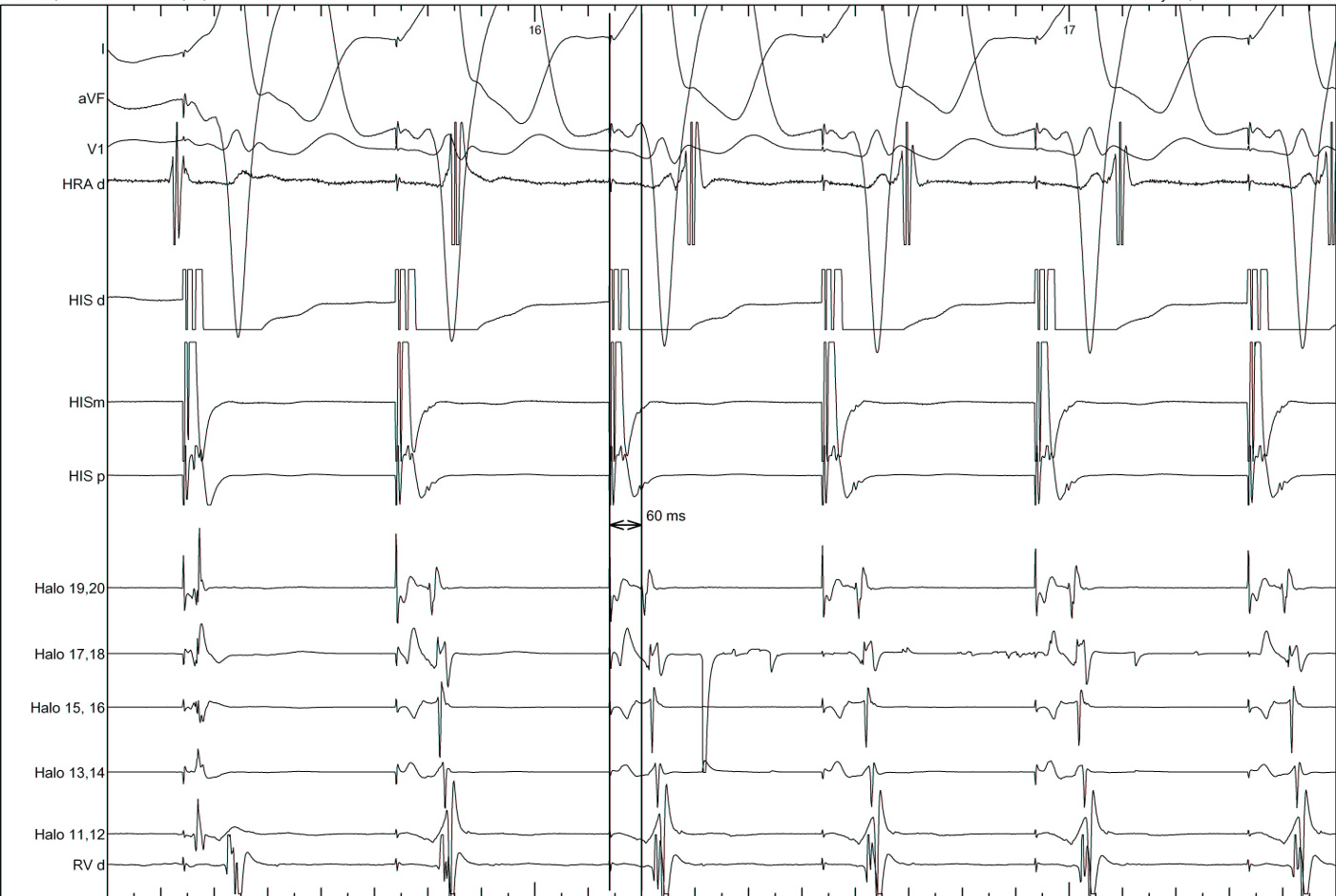
Summary
- Understanding of basic electrophysiology of arrhythmias
- Practice is important
- Although not required at most time, will prove critical in select cases